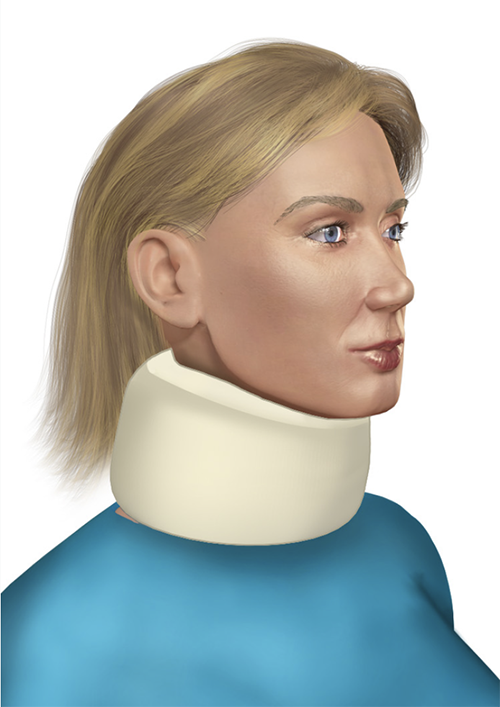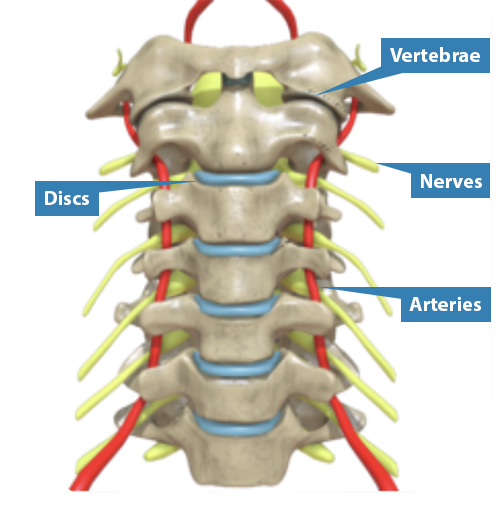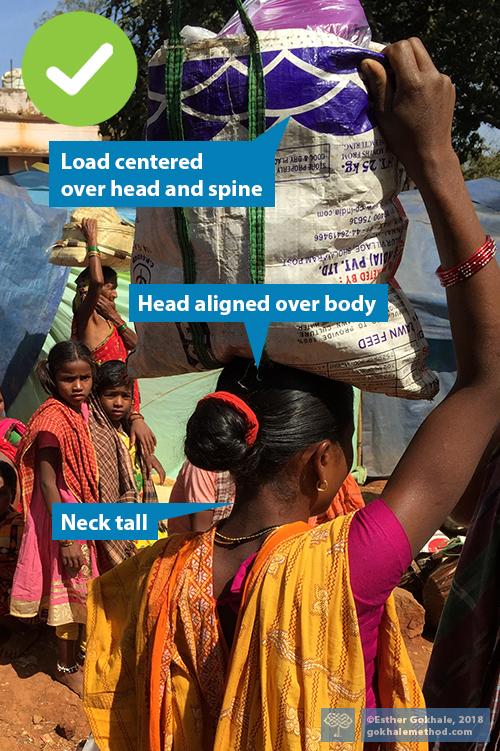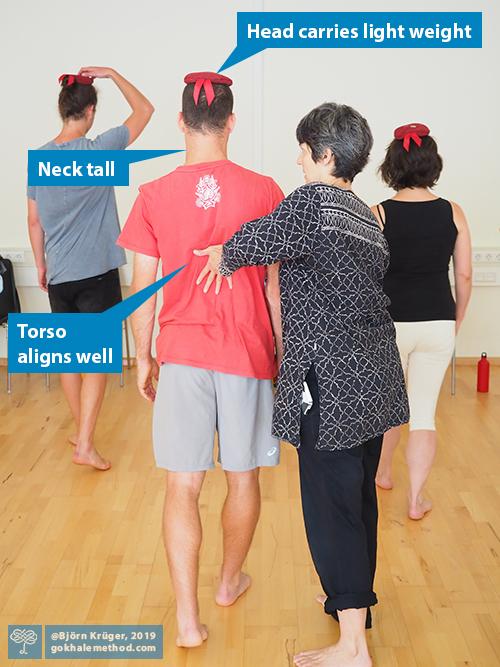How Do I Fix My Neck Pain?
Do you suffer from neck tension, muscle knots, or tingling in your fingers? Do you get frequent headaches?
Or maybe your neck is fine most of the time, but seizes up periodically, leaving you unable to function normally in your job, family life, and recreational activities.

A soft cervical collar is a common prescription to alleviate neck pain. It can give welcome support in the short term, but doesn’t help to strengthen your neck or get to the source of the problem. Wikimedia Commons
Most neck pain involves compression.
In modern cultures, the head often drifts forward as we slouch and crane our necks towards our computer screens. The weight of the head, (typically 11 lb. or 5 kg—think bowling ball), then requires the muscles at the back of the neck to contract strongly to keep the head up. This contraction compresses the relatively delicate tissues in the area. Not a recipe for a healthy, happy neck. If you have forward head carriage but are symptom-free so far, keep reading for tips that will prevent future problems with the discs, nerves, blood vessels, and bones in your neck.

In our culture slumped desk work posture and a degree of forward head carriage is common. Pexels
Restoring the natural length and position of your neck
Young children, ancestral populations, and people living in traditional societies around the world preserve a natural head carriage that stacks the neck well as part of a healthy J-spine. This allows the head to be balanced with only appropriate muscular effort, and the neck to be tall and free from compression.

As young children we instinctively align our neck well over our body. Pexels
Restoring mobility in your neck
Perhaps you have experienced increased stiffness and reduced mobility in your neck over the years? Or unpleasant gritty sounds when you turn your head? Beware of exercises that include extreme flexion, extension, or head circles. These movements, taken to the end of your range of motion, can damage your discs and pinch your cervical nerves. If they are a part of your exercise regimen, consider reducing their range.

There are many delicate and vital structures within the neck, so we first want to align it well. (front view). Wikipedia
In our experience it is best to focus on restoring the neck to a healthy baseline length and shape that centers your head well on your spine. The video below shows you how to proceed:
This gentle movement will help you to find a safe, natural trajectory to get started on gliding your head up and back.
If you have areas of long-standing rigidity or curvature in your neck, it is likely linked to your postural distortions elsewhere in your body, for example thoracic rigidity or a tucked pelvis.
Expect this to take more time and training to change, for which you will be rewarded with additional benefits including comfort, improved circulation, and increased energy.
Finding your neck strength
While many of the neck’s structures are delicate, they can also be strong. The deep muscles that are intended to support the neck and keep it tall tend not to get used very much in modern industrial culture and are often weak. Besides doing strengthening exercises, as is common in conventional approaches to neck problems, learning to carry weight on the head is extremely valuable.

People in traditional societies preserve a taller, straighter neck, and more functional head posture. (Odisha, India)
Cultures that headload suffer much less neck pain than we do and can teach us much about how, where, and why to headload. Not only do these people have excellent neck health, but they also have excellent posture throughout their bodies, and move with elegance and efficiency. Students in our classes begin with light weights to sense the axis along which they need to stack their bones. Over time, the weight can be increased to further strengthen the longus colli, inner corset, and other muscles.

The small extra weight of the Gokhale™Head Cushion enables students not only to strengthen the deep neck muscles and lengthen the neck, but also to better orient their entire skeleton.
My book 8 Steps to a Pain-Free Back has many images of people throughout the world headloading. Healthy head carriage, as opposed to forward head carriage, is an important starting point for this activity. It is not possible to carry significant weight without both the healthy neck alignment and strength to avoid compressive forces.

A well-aligned head and neck is both highly functional—and elegant.
Because about one in three adults are affected by neck pain every year¹, we introduce techniques for the neck early on in our in-person Foundations course (Lesson 1 of 6), in our one-day Pop-up course, and our online Elements course (Lesson 4 of 18). Here students learn in detail the gentle techniques that gradually return the neck towards the length and pain-free position we all enjoyed as infants. Whatever your age, your neck is something you can learn to once again stack in your favor.
References:
- Institute for Quality and Efficiency in Health Care (IQWiG), “Neck Pain: Overview,” InformedHealth.org, last modified February 14, 2019, https://www.ncbi.nlm.nih.gov/books/NBK338120/.
Best next action steps for newcomers
If you would like insight on your posture, consider scheduling an Initial Consultation, online, or in person.
You can sign up below to join one of our upcoming FREE Online Workshops. . .

Comments
Add New Comment
Login to add commment
Login